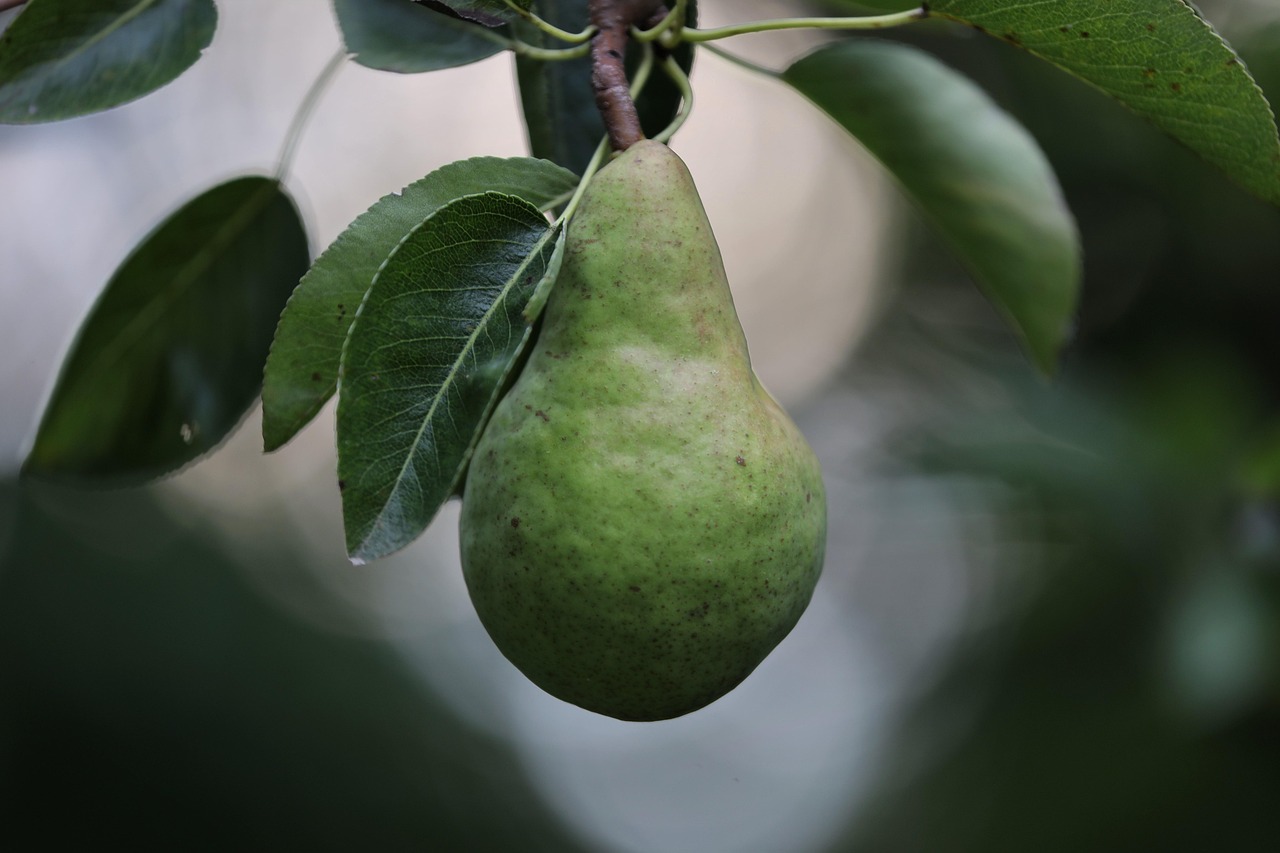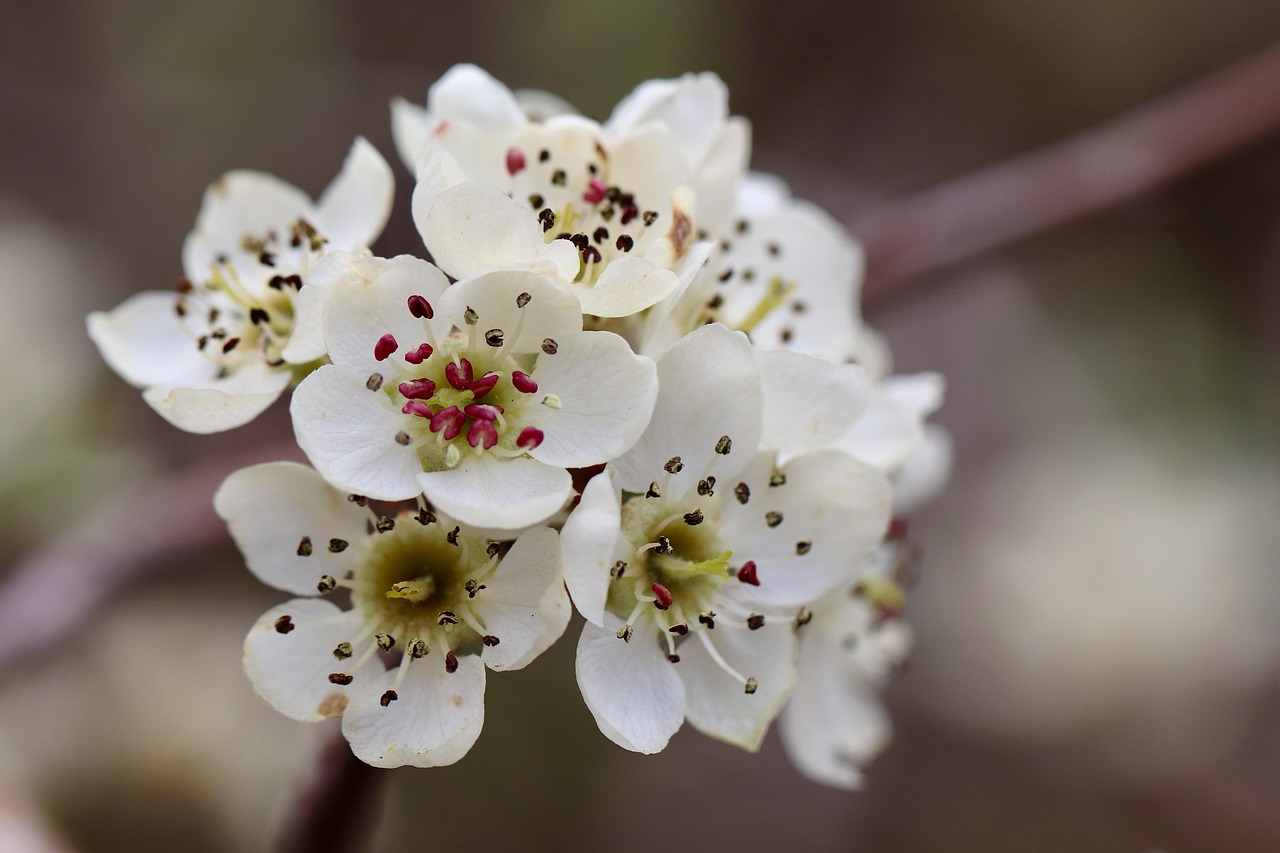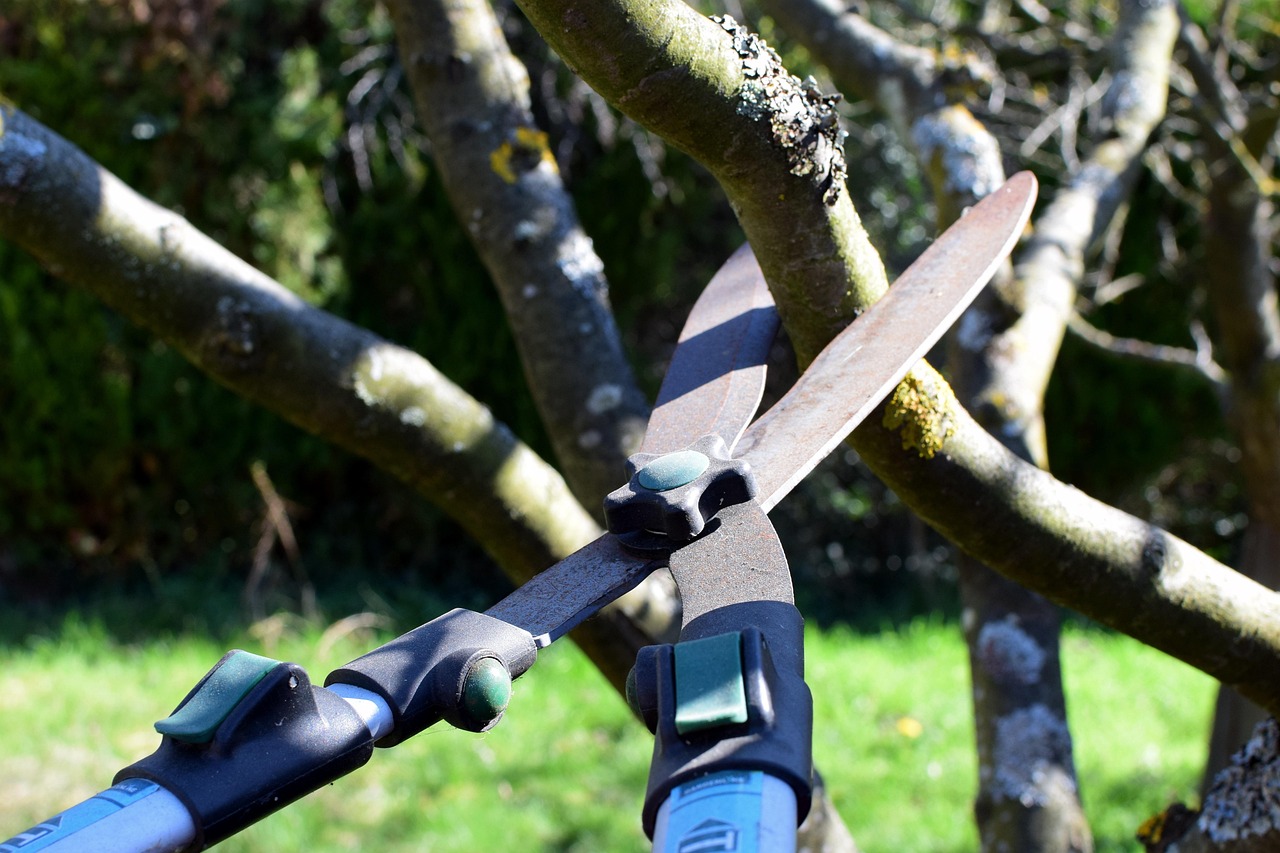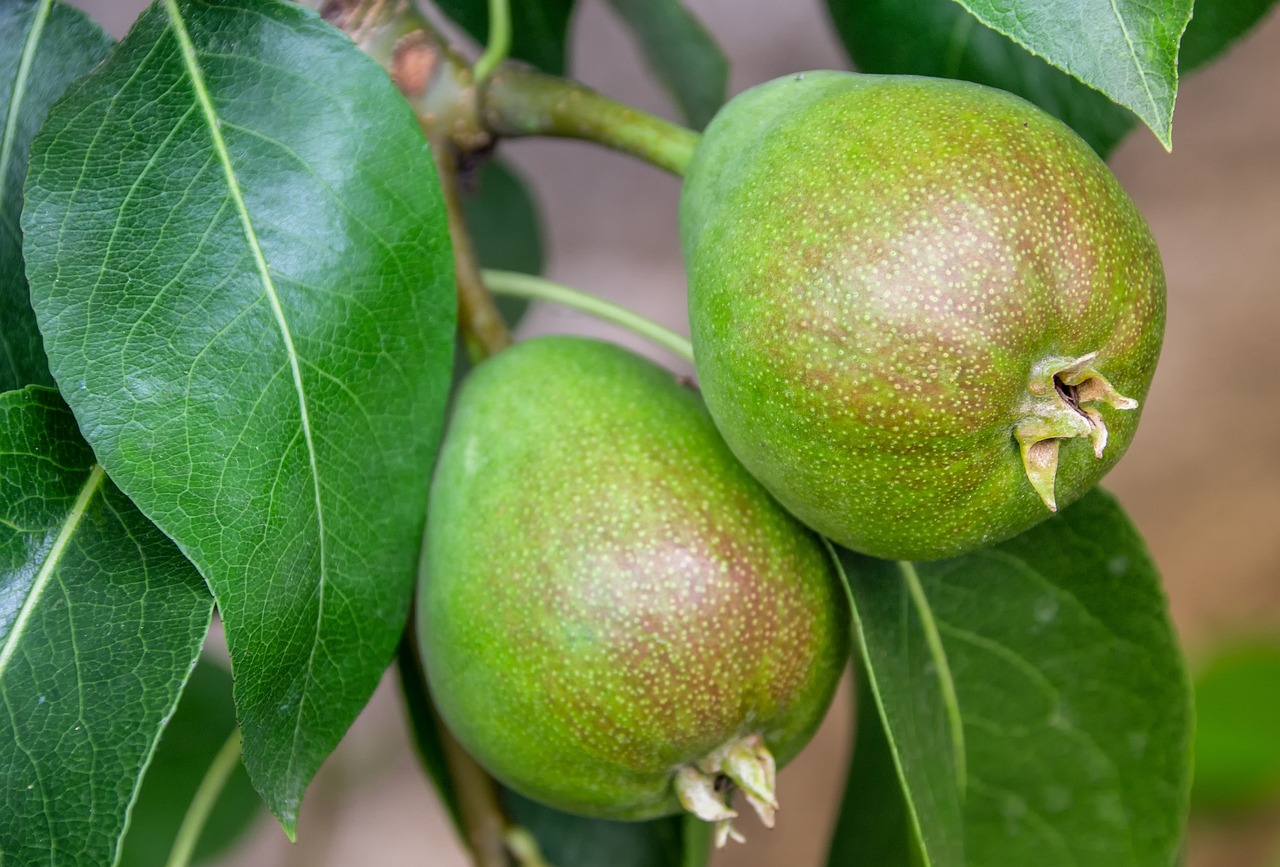Pear tree pruning in community and shared gardens is essential for promoting healthy growth, enhancing fruit production, and maintaining an aesthetically pleasing appearance. Regular pruning helps remove dead or diseased branches, improves air circulation, and shapes the tree for optimal sunlight exposure.
Pear trees are a popular choice in community gardens due to their delicious fruit and beautiful blossoms. When planted in shared spaces, they can provide not only fresh produce but also a communal activity that fosters collaboration among gardeners. However, proper maintenance is crucial to ensure the trees thrive in a communal setting. Pruning is one of the most important tasks in managing pear trees effectively.

Pruning involves selectively removing certain parts of the tree to enhance its health and productivity. This process helps control the size of the tree, encourages new growth, and prevents disease by improving air circulation. In community gardens, where multiple gardeners may be involved in the care of the trees, understanding the basics of pruning is vital for maintaining a healthy orchard.
Understanding Pear Tree Growth
Pear trees typically grow to be medium-sized with a lovely canopy. They thrive in well-drained soil and prefer full sunlight. Here are some key facts about pear tree growth:
| Aspect | Description |
|---|---|
| Height | Typically reaches 15 to 25 feet |
| Spread | Can spread 10 to 20 feet wide |
| Bloom Time | Blooms in spring (March to April) |
| Fruit Maturity | Fruits are ready in late summer to early fall |
Understanding these aspects helps gardeners plan for adequate spacing and access for maintenance tasks like pruning. As pear trees grow, they can become crowded if not pruned properly. This overcrowding can lead to poor air circulation and increased vulnerability to pests and diseases.

When to Prune Pear Trees
The best time to prune pear trees is during their dormant season, which usually occurs in late winter or early spring before the buds begin to swell. Pruning at this time minimizes stress on the tree and allows it to recover quickly as it comes into bloom.
However, there are a few exceptions when you might need to prune during other times of the year:
- If you notice any dead or diseased branches, these should be removed immediately, regardless of the season.
- Light pruning can also be done in late summer after the fruit has been harvested, allowing for better light penetration for remaining leaves.
Techniques for Pruning Pear Trees
There are several techniques that gardeners can employ when pruning pear trees. Here are some essential methods:

- Thinning: This involves removing entire branches from the tree to reduce density. Thinning promotes better air circulation and sunlight exposure.
- Heading: This method involves cutting back a branch to encourage new growth. Heading can help shape the tree and keep it at a manageable height.
- Crown Reduction: This technique reduces the overall size of the tree by shortening main branches. It helps control height and shape without sacrificing fruit production.
Each of these techniques serves a different purpose and can be used based on the specific needs of the tree and the desired outcome for the community garden. It’s important for all gardeners involved in the care of these trees to communicate about their pruning strategies to ensure consistency and effectiveness.
Tools Needed for Pruning
A few essential tools make the pruning process easier and more effective. Here is a list of tools that every gardener should have:
- Pruning Shears: Ideal for cutting small branches and stems.
- Loppers: Useful for cutting larger branches that are too thick for shears.
- Saw: A hand saw or pruning saw is necessary for larger cuts.
- Gloves: Protect hands while working with branches.
- Ladder: Ensure safe access to higher branches.
Using the right tools will make pruning easier and ensure clean cuts, which are vital for tree health. Properly maintained tools also reduce the risk of spreading disease among the trees.

Pruning Techniques for Different Ages of Pear Trees
Understanding the age of a pear tree is crucial for determining the appropriate pruning techniques. Young, mature, and old trees each require different approaches to ensure their health and productivity. Here is a breakdown of the pruning methods suitable for each age group:
Young Pear Trees (1-3 Years)
Young pear trees benefit from formative pruning, which establishes a strong structure. The goal is to create a central leader and a balanced framework of branches. Here are some steps to follow:
- Establishing the Leader: Choose one central branch to serve as the main leader. Remove competing branches to promote vertical growth.
- Branch Selection: Select 3 to 5 well-spaced lateral branches that will form the tree’s framework. Trim any branches that are crossing or growing inward.
- Cutting Back: Shorten the selected branches by one-third to encourage bushier growth and prevent the tree from becoming too tall too quickly.
This formative pruning helps shape the tree for future growth while ensuring adequate light and air circulation.
Mature Pear Trees (4-10 Years)
Mature pear trees require maintenance pruning to enhance fruit production and overall health. Regular pruning at this stage focuses on thinning, heading, and managing tree height.
- Thinning Cuts: Remove older, less productive branches to allow new growth and fruiting spurs to develop.
- Heading Cuts: Trim back long branches to maintain desired height and encourage lateral branching.
- Removing Suckers: Cut away any suckers growing from the base or along the trunk, as they divert energy from fruit production.
Regular maintenance during these years can significantly improve fruit quality and yield.
Old Pear Trees (10+ Years)
As pear trees age, they may become less vigorous and require rejuvenation pruning. The focus shifts to restoring vitality and managing size while maintaining fruit production.
- Assessing Health: Begin by evaluating the overall health of the tree. Remove any dead, damaged, or diseased branches first.
- Crown Reduction: Reduce the height and spread of the crown by selectively removing older branches while keeping younger ones intact.
- Renewal Pruning: If necessary, consider cutting back older branches to ground level to encourage new growth from the base.
These techniques can help revitalize older trees, allowing them to continue producing fruit for many more years.
Common Mistakes in Pear Tree Pruning
Even experienced gardeners can make mistakes when pruning pear trees. Awareness of these common errors can help avoid setbacks in tree health and productivity. Some common mistakes include:
- Pruning at the Wrong Time: Pruning too late in the spring can lead to excessive sap loss, while winter pruning may expose trees to harsh weather conditions.
- Over-Pruning: Excessive removal of branches can stress the tree and reduce fruiting capacity. Aim for balance when pruning.
- Poor Cuts: Making jagged cuts or not using sharp tools can lead to injury and disease entry points. Always strive for clean cuts.
Avoiding these mistakes helps ensure that the trees remain healthy and productive for community gardens.
Caring for Pruned Pear Trees
After pruning, it is essential to provide proper care to help the trees recover and thrive. Here are some care tips for pruned pear trees:
- Watering: Ensure that trees receive adequate water, especially during dry spells. Deep watering encourages strong root growth.
- Fertilizing: Apply a balanced fertilizer in early spring to support new growth and fruit development.
- Pest Management: Monitor for common pests such as codling moths and aphids. Implement organic pest control measures as needed.
Caring for pruned trees not only promotes recovery but also enhances their overall productivity in shared gardens.
The Role of Community in Pear Tree Care
A shared garden is a collaborative effort, making community involvement crucial for successful pear tree maintenance. Here are some ways community members can contribute:
- Education: Organizing workshops on proper pruning techniques can empower community members with knowledge and skills.
- Scheduling Maintenance Days: Setting up designated days for group pruning sessions encourages teamwork and shared responsibility.
- Sharing Resources: Pooling tools and materials allows everyone to participate in tree care without individual financial burdens.
The success of pear tree cultivation in community gardens depends on active participation and collaboration among all gardeners involved. By working together, they can enjoy the benefits of fresh pears while learning from one another’s experiences.
Pear Tree Varieties and Their Pruning Needs
Different varieties of pear trees come with unique growth habits and pruning requirements. Understanding these differences is essential for effective management in community gardens. Here are some common pear varieties and their specific needs regarding pruning:
Common Pear Varieties
| Variety | Characteristics | Pruning Needs |
|---|---|---|
| Bartlett | Popular for its sweet, juicy fruit; grows tall and upright. | Requires regular thinning to maintain shape and promote sunlight exposure. |
| Conference | Known for its long, narrow shape; good disease resistance. | Prune selectively to encourage lateral branching and prevent overcrowding. |
| Comice | Famous for its exceptional flavor; tends to have a wide canopy. | Regular maintenance pruning ensures good air circulation and fruit production. |
| Asian Pear | Round, crisp fruit; grows differently than European varieties. | Requires less pruning; focus on removing dead branches and maintaining structure. |
Understanding the specific characteristics and needs of each variety will help gardeners tailor their pruning strategies effectively.
Seasonal Care Considerations
The care of pear trees extends beyond pruning. Seasonal changes bring about different considerations that gardeners should be aware of to ensure the health of the trees throughout the year.
Spring Care
As pear trees emerge from dormancy, spring marks an important time for various care activities. Key tasks include:
- Monitoring Bud Break: Keep an eye on bud swelling to determine the right time for final pruning.
- Fertilization: Apply a balanced fertilizer to support new growth and flowering.
- Pest Prevention: Begin monitoring for pests such as aphids and scale insects, which can affect young leaves.
Summer Care
During the summer months, focus shifts to maintaining tree health as it enters the fruiting phase. Important activities include:
- Irrigation: Ensure trees receive adequate water, especially during dry spells to support fruit development.
- Pest Management: Check regularly for signs of pests or diseases that may arise during the warm months.
- Thinning Fruit: If necessary, thin out excess fruit to allow remaining pears to grow larger and healthier.
Autumn Care
As autumn approaches, preparation for winter becomes essential. Important care strategies include:
- Harvesting: Harvest pears at the right time for optimal taste and texture. Timing varies by variety.
- Preparing for Winter: Apply mulch around the base of trees to protect roots from cold temperatures.
- Pest Control: Remove fallen fruit and debris to reduce pest habitats during winter months.
Winter Care
Winter is primarily a dormant period for pear trees, but care is still needed. Key winter tasks include:
- Inspecting Trees: Regularly check for damage from cold weather or pests. Remove any dead branches observed.
- Cleansing Tools: Clean and disinfect pruning tools before storage to prevent disease transfer in the coming season.
- Planning for Pruning: Use this time to plan out pruning strategies for the upcoming spring season based on observations made during the winter months.
Sustainable Practices in Pear Tree Management
Sustainability is vital in community gardening. Implementing eco-friendly practices can enhance the health of pear trees while benefiting the environment. Here are some sustainable practices to consider:
- Organic Fertilizers: Use organic compost or fertilizers to enrich the soil without harmful chemicals that can leach into water sources.
- Natural Pest Control: Employ beneficial insects like ladybugs and predatory wasps to manage pest populations instead of chemical pesticides.
- Diversity in Planting: Planting companion plants can deter pests and enhance soil health, which benefits pear trees.
Sustainability not only supports the local ecosystem but also fosters a sense of community responsibility among gardeners. By adopting these practices, community gardens can thrive while promoting environmental stewardship.
The Importance of Record Keeping
Maintaining records is essential for successful pear tree management in community gardens. Documentation allows gardeners to track growth patterns, pruning schedules, and pest management efforts. Key elements to record include:
- Date of Pruning: Note when each tree is pruned to evaluate timing effectiveness in future seasons.
- Pest Observations: Document any pest sightings or interventions taken to analyze trends over time.
- Harvest Yields: Keep track of fruit yields from each tree annually to identify productive varieties and make informed decisions for future plantings.
A well-maintained record can provide valuable insights and foster better communication among community members involved in pear tree care, enhancing overall success in shared gardening efforts.
Challenges in Pear Tree Pruning and Management
While pruning pear trees in community gardens can be rewarding, it also comes with challenges that gardeners must navigate. Understanding these challenges can help in developing strategies to address them effectively.
Pest and Disease Management
Pear trees are susceptible to various pests and diseases that can hinder growth and fruit production. Some common issues include:
- Fire Blight: A bacterial disease that can cause significant damage. Early detection and removal of infected branches are crucial.
- Codling Moth: This pest targets the fruit, making it essential to monitor trees closely, especially during the fruiting season.
- Aphids: These small insects can weaken trees if not controlled. Introducing beneficial insects can provide natural pest control.
Regular monitoring and proper cultural practices can significantly reduce the impact of these challenges, ensuring healthier trees and better yields.
Weather-Related Issues
Weather conditions can also pose challenges to pear tree health. Factors such as late frosts, heavy rains, or drought can affect growth patterns and fruit quality. Here are some considerations:
- Frost Damage: Late spring frosts can kill blossoms, leading to reduced fruit yield. Planting in protected areas may mitigate this risk.
- Excessive Rain: Heavy rainfall can lead to root rot or fungal diseases. Ensuring proper drainage is essential.
- Drought Stress: Insufficient water can lead to poor fruit development. Regular watering is necessary during dry spells.
Gardeners should remain vigilant and flexible, ready to adapt their care routines based on seasonal weather patterns.
Community Engagement and Education
Engaging the community in pear tree care goes beyond just maintenance. It involves educating members about the benefits of sustainable practices and fostering a sense of ownership over shared resources. Here are some effective strategies for community engagement:
- Workshops and Demonstrations: Organizing hands-on workshops can equip community members with essential skills in pruning, pest management, and sustainability practices.
- Garden Meetings: Regular meetings provide a platform for discussing challenges, sharing successes, and planning future activities related to pear tree care.
- Involving Local Experts: Inviting local horticulturists or master gardeners to share their expertise can enhance knowledge and confidence among community members.
The more involved individuals feel in the care of pear trees, the more likely they are to invest time and effort into maintaining the shared garden.
Economic Benefits of Community Pear Gardens
In addition to providing fresh fruit, community pear gardens offer economic benefits that can enhance local communities. Here are a few potential advantages:
- Food Security: Growing pears in shared gardens contributes to local food security, providing fresh produce accessible to all community members.
- Cost Savings: Community members can save money on groceries by harvesting their fruits rather than purchasing them at stores.
- Increased Property Values: Well-maintained community gardens can enhance neighborhood aesthetics and potentially increase property values.
The economic benefits extend beyond individual households, creating a more resilient and connected community.
Final Thoughts
Pear tree pruning and management in community gardens requires a combination of knowledge, teamwork, and commitment. By understanding the specific needs of pear trees, implementing sustainable practices, and fostering community engagement, gardeners can create a thriving environment that benefits everyone involved.
The journey of cultivating pear trees offers not only the joy of harvesting delicious fruit but also an opportunity for learning, collaboration, and building lasting relationships within the community. As shared gardens continue to grow in popularity, the importance of effective pear tree management will become increasingly vital to ensure their success.
Through active participation and a commitment to sustainable practices, community members can enjoy the fruits of their labor while contributing positively to the environment and their local economy. The care for pear trees is more than just a gardening task; it’s a shared mission that celebrates nature, cooperation, and the joy of growing together.
